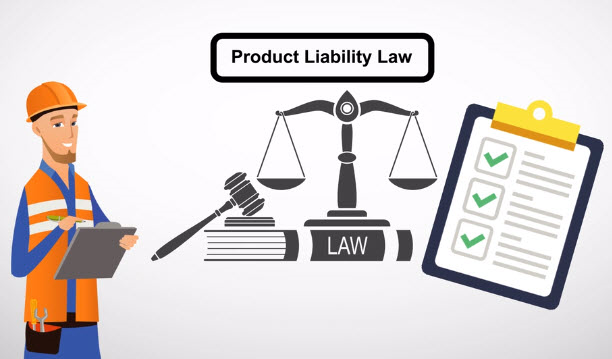Navigating the waters of accessibility compliance can be complex, but one beacon of guidance remains a constant: the Voluntary Product Accessibility Template (VPAT). As the digital space burgeons, the importance of ensuring that products and services are accessible to all individuals, regardless of ability, has come to the forefront.
This document is not just a formality; it’s an emblem of your commitment to inclusivity and a mirror reflecting the accessibility ethos of your organization. In this piece, we endeavor to illuminate the quintessential elements inherent in a superbly prepared VPAT document, a resource that accessibility professionals, compliance officers, and software developers should master.
Executive Summary
The interface design exhibits commendable attention to keyboard navigation and readability, ensuring that individuals with motor or visual impairments can navigate efficiently.
However, despite these strides, some barriers remain – auditory content lacks sufficient captioning for the hearing impaired, and complex graphical elements are not always paired with descriptive text for screen readers. To surmount these hurdles, a clear path involves integrating detailed captions and alt text throughout the product.
By taking such definitive actions, the product will not only comply with established accessibility standards but will also epitomize a model of digital inclusivity. In addition, the VPAT certification process requires ongoing commitment and dedication to ensure accessibility, as products are continuously updated and improved.
By regularly reviewing and addressing accessibility issues, companies can stay true to their promise of inclusivity and create a more equitable digital landscape for all individuals.
Evaluation Methods Used
Automated tools, such as screen reader simulators and accessibility auditing software, were utilized to swiftly identify issues pertaining to navigational structures and ARIA (Accessible Rich Internet Applications) landmarks, while manual testing, conducted by experts familiar with WCAG (Web Content Accessibility Guidelines) criteria, served to meticulously examine the user experience for those with disabilities.
This blend of methodologies guarantees that the product is scrutinized from multiple angles, catching subtleties and nuances that automated analysis may overlook. Additionally, user testing with individuals with varying abilities was essential in understanding real-world challenges faced by users. This diversity in testing methods ensures a thorough and accurate assessment, ultimately contributing to the creation of a more inclusive product.
Accessibility Features
The product’s accessibility features take a proactive stance on inclusive design, ensuring that every user has an equitable experience. Many accessibility features are often overlooked, but they are crucial for enhancing the user experience and removing barriers.
- Text-to-Speech Functionality: The robust text-to-speech feature supports individuals with visual impairments, lending them the ability to consume digital content auditorily.
- Contrast and Color Options: Recognizing the needs of users with color vision deficiencies, the product presents high-contrast themes and color adjustment settings to mitigate issues related to color perception.
- Keyboard-Navigable Interface: The interface design prioritizes keyboard-only users by providing a logical tab order and skip links, facilitating easier navigation without the reliance on a mouse.
- Alternative Text for Images: To serve users of screen readers effectively, all images within the product include descriptive alt text, articulating the content and function of visuals.
- Closed Captioning and Transcripts for Multimedia: Ensuring that multimedia is accessible, all audio and video content is accompanied by closed captions and transcripts for users who are deaf or hard of hearing.
- Adjustable Fonts and Layout: With consideration for those with visual impairments, the product allows users to adjust font sizes and page layouts without compromising the structural integrity of the information.
Known Limitations
Candid disclosure of areas where the product may fall short in terms of accessibility, accompanied by reasons and, if possible, a roadmap for future improvements. This information is essential for maintaining transparency and setting realistic expectations for users.
Some limitations of the product include complex graphical elements that are not always accompanied by descriptive text, lack of additional keyboard shortcuts for certain actions, and limited compatibility with assistive technologies. By identifying these limitations, agencies will be committed to working towards finding solutions and continuously improving the product’s accessibility.
VPAT is an ever-evolving document, and we are dedicated to keeping it up-to-date as we strive towards a more inclusive digital landscape.
Conformance Level
The level of accessibility conformance is Level AA, as specified in the WCAG 2.1 guidelines. This level is considered an industry standard for digital accessibility and demonstrates a strong commitment to inclusivity. Furthermore, this level of conformance allows for more comprehensive accessibility for individuals with disabilities, ensuring a better user experience for all.
By adhering to these guidelines and continuously striving to improve accessibility, many individuals, who may have otherwise been excluded, can now access and benefit from the product. After all, digital inclusion is a journey, and agencies must be committed to making it a smooth and accessible one for everyone.
In retrospect, the VPAT is more than just a compliance document; it represents an organization’s values and commitment to inclusivity. It serves as a guide for accessibility professionals, compliance officers, and software developers to ensure that their products are accessible to all individuals, regardless of ability.
By following its requirements and continuously striving towards improvement, we can create a more equitable digital landscape for everyone. Let us continue to prioritize inclusivity and ensure that no one is left behind in the ever-evolving digital world.
Is a freelance tech writer based in the East Continent, is quite fascinated by modern-day gadgets, smartphones, and all the hype and buzz about modern technology on the Internet. Besides this a part-time photographer and love to travel and explore. Follow me on. Twitter, Facebook Or Simply Contact Here. Or Email: [email protected]








Leave a Reply